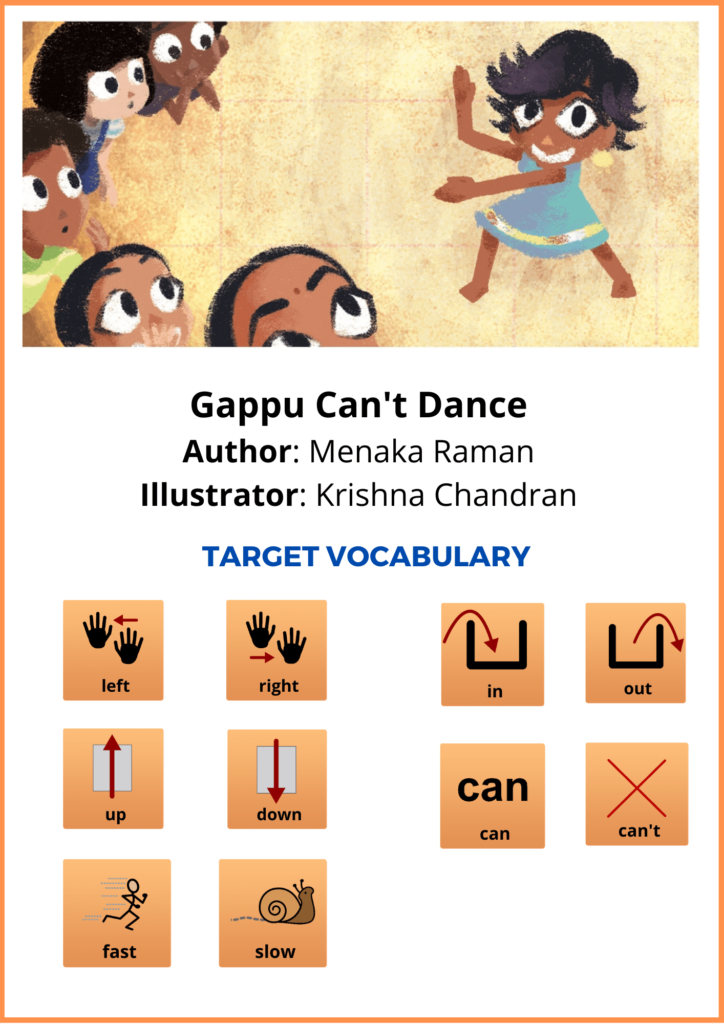Books are a gateway to a world of information and knowledge for young kids. Children get to pick up more than just language while reading. Fables and fantasy books kindle their imagination and inspire their creativity. Children with special needs may miss out on the wondrous world books can take them into as most conventional books are not accessible. Adapted books serve as a wonderful solution that ensures that cognitive or physical challenges do not rob anybody of the joy of reading.
What are Adapted Books?
By making necessary modifications to books, we can make reading possible for all individuals irrespective of their abilities. Such modified books are called adapted books.
Modifications include changes in fonts, retelling of a story with simpler words, adding more images for visual learners or using symbols with text for AAC users.
Individuals with all kinds of disabilities can benefit from adapted books. For those with visual impairments, books with larger fonts or a braille can make reading accessible. Tactile learners would find books with different textures exciting.
Literacy through Adapted Books
Reading has been shown to be a major factor in the literacy acquisition of learners. When children get to read books, they get an opportunity to participate in classrooms and engage in conversations with their peers about stuff they read.
By using adapted books, we can support the learning of learners with disabilities. Books can be modified according to the needs of learners, thus catering to all skill levels.
Learners with reading difficulties can find books overwhelming. Such learners may rely heavily on others to read and make meaning out of text. Including meanings and syllable hints in the book makes them gain the confidence to read independently.
Easy DIY Ideas
With a little bit of creativity and effort, you can create fun adapted books that engage learners. Here are a few simple ideas for making your own books:
Picture Them
Young children generally love books with pictures. Pictures help children visualize the scene and understand text better.
For example, if the book talks about the Thanksgiving feast, include pictures that will help children visualize the text. Find images on the web for all the Thanksgiving vocabulary.
Pictures help with reading comprehension by reducing the cognitive load of the learner. For children with learning disabilities, picture hints help in identifying the words they are already familiar with.
Including symbols with text allows AAC learners to not only understand the text but also to express how much they have understood. This helps them to develop their expressive language and enables them to be part of book discussions in the classroom. Read about how pictures help children communicate better here
Simplifying Stories
We’ve all grown up reading classic fairy tales and fables. Retelling these stories using simpler words and phrases enables children of all abilities to enjoy the classics.
For example, ‘Jack and Jill went up the hill to fetch a pail of water’ can be written as
‘Jack and Jill went up the hill to get water.’
For emergent learners, we can focus on them learning words they can use in real life such as ‘get’ and ‘water’. So, we can replace the words ‘fetch’ and ‘pail’ with words learners can understand or are already familiar with.
Some of the classic tales also don’t stand the test of time when it comes to inclusivity. So, we can take the liberty to retell the stories without gender biases or cultural or racial prejudices.
Princesses in our version of fairy tales can be smart, confident individuals instead of being damsels in distress all the time. Pictures of princes and princesses in wheelchairs or with AAC systems also can make children with special needs feel included.





Sorry to share that i wouldn’t follow this idea to my child who is autistic.
For me avaz is a tool predominantly to communicate. Yes i do agree that language is an essential skill to build on communication but i prefer to teach language through real experiences and not through fictious stories. So i restrict avaz to real things and not use it for fantasies.
And this point holds good only for autism for whom dsm defines communication, language and imagination as a core deficit and doesnt hold good for other disabilities with different other issues.
Personally i feel it might not be a good idea to widen avaz s scope to imagination for children with autism and restrict it only to real world things
Thanks Priya, for sharing how you use Avaz with your son.
Children with special needs have different abilities and challenges. Reading books, both fiction and non-fiction, using AAC benefits several children with complex communication needs. Literacy requires a learner to communicate what they have understood and reading is an integral part of literacy.
However, like you rightly point out, fiction may not be a great way to teach language or develop communication for some children. This is why we cannot have a one-size-fits-all approach with all AAC learners.